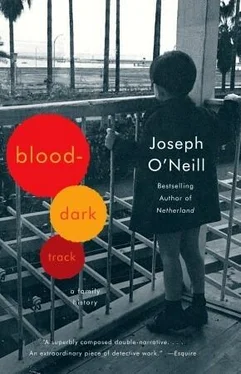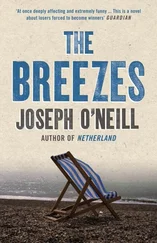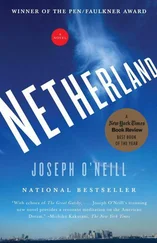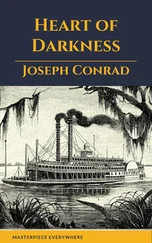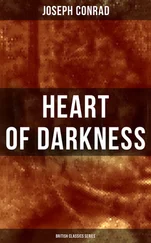I had always doubted that many Irish people subscribed to this kind of analysis with any vehemence or, if they did, gave it much contemporary significance. Most of us felt that the injustice and oppression suffered by our ancestors had been adequately ventilated over the past century and that our duties to them were sufficiently performed by the moderate forms of remembrance that were now in place: classroom history lessons, the occasional film or book, and ceremonies like the Great Famine Event in 1997. We were ready for fresh stories about ourselves, and this had apparently been confirmed by the famous referendums of 22 May 1998. But on 15 August 1998, which was only a week before I boarded the Taurus Express at Adana, a huge bomb exploded in the centre of Omagh, a market town in Co. Tyrone, killing 29 civilians. The massacre — the worst in the last 30 years of violence — was said to be the work of the Real IRA, a group associated by the press with Bernadette Sands, the sister of the hunger striker Bobby Sands. Bernadette Sands had come to my notice a few months before Omagh, when I’d heard her bitterly pronouncing on the failure of the Good Friday Agreement to make definite provision for a united Ireland. What had interested me wasn’t the fact of her opposition to the peace process — inevitably, some republicans would be incapable of compromise — but the grounds she relied on: that the Agreement rendered vain the sacrifices and exertions of bygone republicans — republicans like her dead brother and, of course, Jim O’Neill. Was it for a devolved assembly, she rhetorically asked, that so many volunteers died and sacrificed years of freedom? For Sands, it seemed, the resolution of present-day political grievances turned, on some fundamental level, on the discharge of assumed obligations to the wronged dead, whose shadowy needs were to be added to those of the living and unborn.
At what point were we released from participation in the injustices of the past? The Armenian nation still craved our attention and made demands on our pity and outrage, and as I sat on the Taurus Express, I felt under a blurry duty to fight off my tiredness, to remember those who passed through this unremarkable landscape eighty years before. But I fell asleep.
When I awoke, we were moving along the edge of a cool valley in a corridor of pine trees. Clusters of poplars signalled the course of a small river, and, in the hills, villages thick with fruit trees appeared among the pine woods. Every five minutes, it seemed, we stopped at a tiny, beautiful old station.
We climbed higher and the train began pleasantly to pass in and out of tunnels. We had reached the Amanus Mountains, which were the scene in the Great War of frantic efforts by the Baghdad Railway Company to complete the construction of the railway. Nevertheless, the Armenians working here were rounded up and marched off in June 1916 and replaced by 1,600 British and Indian prisoners of war. Just over a month later, Joseph Dakak started work at the construction camp at Belemedik, where the Taurus tunnels, the longest on the Baghdad railway, were being built. There, the Armenian workforce was still in place: the military imperative of completing the work and the lack of readily available skilled replacements had contrived to exempt them from deportation. The luck of these railway workers and their families held out for the rest of the war. They formed one of the very few cadres of Armenians to escape deportation.
After a lengthy stop in a hill-station, the train descended from the Amanus into typical Anatolian territory: flat farmland and marshy scrubland stretching out for miles up to a blur of distant hills. The train continued to crab towards Gaziantep, which lay directly to the east, along a maddeningly indirect loop of track. I fell asleep again and awoke again. Still the same scenes: cottonfields, cornfields and inconsequential stony fields. When I next opened my eyes, the train, escorted by a cloud of butterflies, was thundering by groves of pistachio trees. We entered the sprawling, dusty industrial city of Gaziantep, the source of so many summer visitors to Mersin’s coastline.
I didn’t linger. I went straight from the train station to the otogar and caught a mini-bus back towards the coast, to Iskenderun. My thoughts went back to a character in my grandfather’s testimony, Aram Hachadourian, the Armenian native of Gaziantep who’d lived in Iskenderun until he was forced out in 1939, when France conceded Hatay — that fertile strip of East Mediterranean shoreline to which Syria still laid claim — to Turkey.
It was mid-afternoon when I arrived in Hatay. The mini-bus stopped at Dörtyol, which used to be a mainly Armenian village, and then continued south. On the left, the Amanus loomed as vaporous and cloud-smudged as the Wicklow Mountains viewed from the Curragh. Passing through lemon and orange groves that overwhelmed me with memories — or fantasies — of a time when Mersin was ringed by just such gardens, we reached the coast at the small port of Payas. During the 1909 massacres, 272 Armenian deaths were reported in Payas, Dörtyol and other villages around Iskenderun.
After going through a heavily industrialized area of factories and container yards, we came to Iskenderun, picturesquely wedged between steaming, spectacularly proximate wooded mountains, and a Mediterranean Sea that seemed greyer and choppier than the one that lapped against the shore at Mersin. I checked into the Hitit Hotel, a half-gutted ’seventies construction that either had never been completed or was already ruined. The balcony of my room overlooked the sea and the post office, a grand limestone building built by the French. I took a shower and then strolled out into the humid early evening. I wasn’t sure what to expect. This was my first visit to my grandfather’s birthplace.
The waterfront was a less polished, more intimate version of the one at Mersin. There was a boulevard, palm trees, sparse traffic, and a congenial little park where, after dinner and dark, children would play on swings and seesaws until late in the warm night. A couple of horse-drawn carriages made their way decoratively up and down the boulevard, where a very few degenerating examples remained of the row of Ottoman villas that had, during the Second World War, housed the residence of the Turkish general commanding the region, and the Italian and German and British and United States consulates. Behind the waterfront was a neighbourhood of narrow streets and small, rickety houses. It was wonderfully quiet, and the odour of jasmine and the echoing calls of turtle doves stirred in me a sharp, bittersweet ache. My nostalgia intensified when I was surprised by the chatter of Arabic drifting from the small gardens; how comforting was the sound of a language I first heard spoken by elderly ladies who loved me! It was in this quarter, just behind the waterfront, that I came across the Greek consulate, housed in an old building that retained a crumbling, slightly ludicrous grandeur. Next door to it, in the only carefully restored Ottoman structure I’d seen, was the British consulate: it had returned to its 1909 location, the offices of Catoni, maritime agents and agent of Lloyd’s underwriters. I sensed, as I wandered back to the waterfront to the sound of Arabic mingled with Turkish and the smell of horse-dung, that something was left of the Ottoman Syrian town in which Joseph Dakak had passed his first ten years. There still stood in Iskenderun a Catholic church, two Orthodox churches and even an Armenian church. It was also easy to imagine, as the Amanus Mountains darkened in the east and I rejoined the locals in strolling along the boulevard, the intrigue and espionage that had taken place in this small, intense port during the last war. C.T.C. Taylor, the British SIME agent, wrote that German intelligence had approached a certain Y, a prominent resident of Hatay, to use his position to obtain intelligence about Allied troop movements in Syria and Palestine, but Y notified the British of the approach and offered his services as a double agent. On one occasion, Taylor met Y at Antakya under the surveillance of intensely suspicious Turkish plainclothes detectives; another time, they met at the open air restaurant of Joseph Ayvazian, the Axis informer, where Taylor dropped a parcel in the darkness for collection by Y. Taylor’s greatest coup was bribing the cleaner at the Italian consulate to place the contents of the consul’s — the Marquis di San Felice’s — waste-paper baskets into bags and pass them on to the British.
Читать дальше
Конец ознакомительного отрывка
Купить книгу
